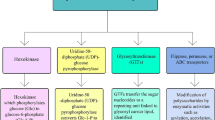Abstract
The aim of the study is to analyze the biodegradation capacity of a biosurfactant exopolysaccharide (EPS2003) by heterotrophic marine bacterial strains. During the initial screening performed in two sites located at the harbor of Messina for analyzing the response of marine bacterial population with the presence of biosurfactant EPS2003, ten bacterial strains capable to degrade this substance were isolated. Between the bacterial strains isolated, two representative bacterial strains, isoDES-01, clustered with Pseudoalteromonas sp. A28 (100%), and isoDES-07, closely related to Vibrio proteolyticus (98.9%), were chosen for mineralization and respirometry test, performed to evaluate biodegradability potential of EPS2003. Assays of bacterial growth and measure of concentration of total RNA were also performed. More than 90% of EPS2003 was mineralized by the isoDE01 strain for biomass formation and respiration, while EPS2003 mineralization by the isoDE-07 strain was less effective, reaching 60%. This approach combines the study of the microbial community with its functional aspects (i.e., mineralization and respirometry test) allowing a more precise assessment of biosurfactant degradation. These results enhance our knowledge of microbial ecology of EPS-degrading bacteria and the mechanisms by which this biodegradation occurs. This will prove helpful for predicting the environmental fate of these compounds and for developing practical EPS2003 bioremediation strategies from future marine hydrocarbon pollution.





Similar content being viewed by others
References
Aronstein, B. N., & Alexander, M. (1993). Effect of a non-ionic surfactant added to the soil surface on the biodegradation of aromatic hydrocarbons within the soil. Applied Microbiology and Biotechnology, 39, 386–390.
Banat, I. M. (1995). Biosurfactants production and possible use in microbial enhanced oil recovery and oil pollution remediation. A review. Biosource Technol, 51(1), 1–12.
Barkay, T., Navon-Venezia, S., Ron, E. Z., & Rosemberg, E. (1999). Enhancement of solubilization and biodegradation of polyaromatic hydrocarbons by the bioemulsifier alasan. Applied and Environmental Microbiology, 65, 2697–2702.
Bruheim, P., Bredholt, H., & Eimhjellen, K. (1997). Bacterial degradation of emulsified crude oil and the effect of various surfactants. Canadian Journal of Microbiology, 43(1), 17–22.
Bruheim, P., Bredholt, H., & Eimhjellen, K. (1999). Effects of surfactant mixtures, including corexit 9527, on bacterial mineralization of acetate and alkanes in crude oil. Applied and Environmental Microbiology, 65(4), 1658–1661.
Cappello, S., Caruso, G., Zampino, D., Monticelli, L. S., Maimone, G., Denaro, R., et al. (2007). Microbial community dynamics during assays of harbour oil spill bioremediation: a microscale simulation study. Journal Applied Microbiology, 102(1), 184–194.
Chang, S., Pryear, J., & Cairney, J. (1993). A simple and efficient method for isolating RNA from pine trees. Plant Molecular Biology Reporter, 11, 113–117.
Crescenzi, F., Camilli, M., Fascetti, E., Porcelli, F., Prosperi, G. & Sacceddu, P. (2003). Microbial degradation of biosurfactant dispersed oil. #499, International Oil Spill Conference.
Desai, J. D., & Banat, I. M. (1997). Microbial production of surfactants and their commercial potential. Microbiology Molecular Biology Review, 61(1), 47–64.
Dyksterhouse, S. E., Gray, J. P., Herwig, R. P., Lara, J. C., & Staley, J. T. (1995). Cycloclasticus pugetii gen. nov., sp. nov., an aromatic hydrocarbon-degrading bacterium from marine sediments. International Journal of Systematic Bacteriology, 45, 116–123.
Goksokir, J. (1962). A Warburg apparatus with automatic recording of respiratory C-14-labelled CO2. Analytical Biochemistry, 3, 439–447.
Lane, D. J. (1991). 16/23S rRNA sequencing. In E. Stackerbrandt & M. Goodfellow (Eds.), Nucleic acid techniques in bacterial systematics (pp. 115–175). New York: Wiley.
Porter, K. G., & Feig, G. (1980). The use of DAPI for identifying and counting aquatic microflora. Limnology and Oceanography, 25(5), 943–948.
Ron, E. Z., & Rosenberg, E. (2001). Natural roles of biosurfactants. Environmental Microbiology, 3(4), 229–236.
Sar, N., & Rosenberg, E. (1983). Emulsan production by Acinetobacter calcoaceticus strains. Current Microbiology, 9, 309–314.
Shoam, Y., Rosenberg, M., & Rosenberg, E. (1983a). Bacterial degradation of Emulsan. Applied and Environmental Microbiology, 46(3), 573–579.
Shoam, Y., Rosenberg, M., & Rosenberg, E. (1983b). Enzymatic depolymerization of Emulsan. Journal of Bacteriology, 156(1), 161–167.
Volkering, F., Breure, A. M., van Andel, J. G., & Rulkens, W. H. (1995). Influence of nonionic surfactants on polycyclic aromatic hydrocarbons. Applied and Environmental Microbiology, 61, 1699–1705.
Volkering, F., Breure, A. M., & Rulkens, W. H. (1997). Microbiological aspects of surfactant use for biological soil remediation. Biodegradation, 8, 401–417.
Yakimov, M. M., Gentile, G., Bruni, V., Cappello, S., D’Auria, G., Golyshin, P. N., et al. (2004). Crude oil-induced structural shift of coastal bacterial communities of Rod Bay (Terra Nova Bay, Ross Sea, Antarctica) and characterization of cultured cold-adapted hydrocarbonoclastic bacteria. FEMS Microbiology Ecology, 49(3), 419–432.
Yakimov, M. M., Denaro, R., Genovese, M., Cappello, S., D’Auria, G., Chernikova, T. N., et al. (2005). Natural microbial diversity in superficial sediments of Milazzo Harbour (Sicily) and community successions during microcosm enrichment with various hydrocarbons. Environmental Microbiology, 7(9), 1426–1441.
Yakimov, M. M., Cappello, S., Crisafi, E., Tursi, A., Corselli, C., Scarfì, S., et al. (2006). Phylogenetic survey of metabolically active microbial communities associated with the deep-sea coral Lophelia pertusa from the Apulian Plateau, Central Mediterranean Sea. Deep Sea Research Part I, 53, 62–75.
Zampino, D., Zaccone, R., & La Ferla, R. (2004). Determination of living and active bacterioplankton: a comparison of methods. Chemistry and Ecology, 20(6), 411–422.
Acknowledgments
We are indebted to Maria Genovese for excellent technical assistance. This work was supported by grants from Italian National Operative Programme (Project PON S.A.B.I.E.).
Author information
Authors and Affiliations
Corresponding author
Rights and permissions
About this article
Cite this article
Cappello, S., Crisari, A., Denaro, R. et al. Biodegradation of a Bioemulsificant Exopolysaccharide (EPS2003) by Marine Bacteria. Water Air Soil Pollut 214, 645–652 (2011). https://doi.org/10.1007/s11270-010-0452-7
Received:
Accepted:
Published:
Issue Date:
DOI: https://doi.org/10.1007/s11270-010-0452-7




